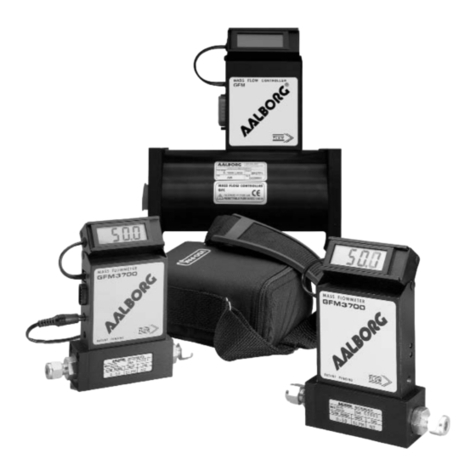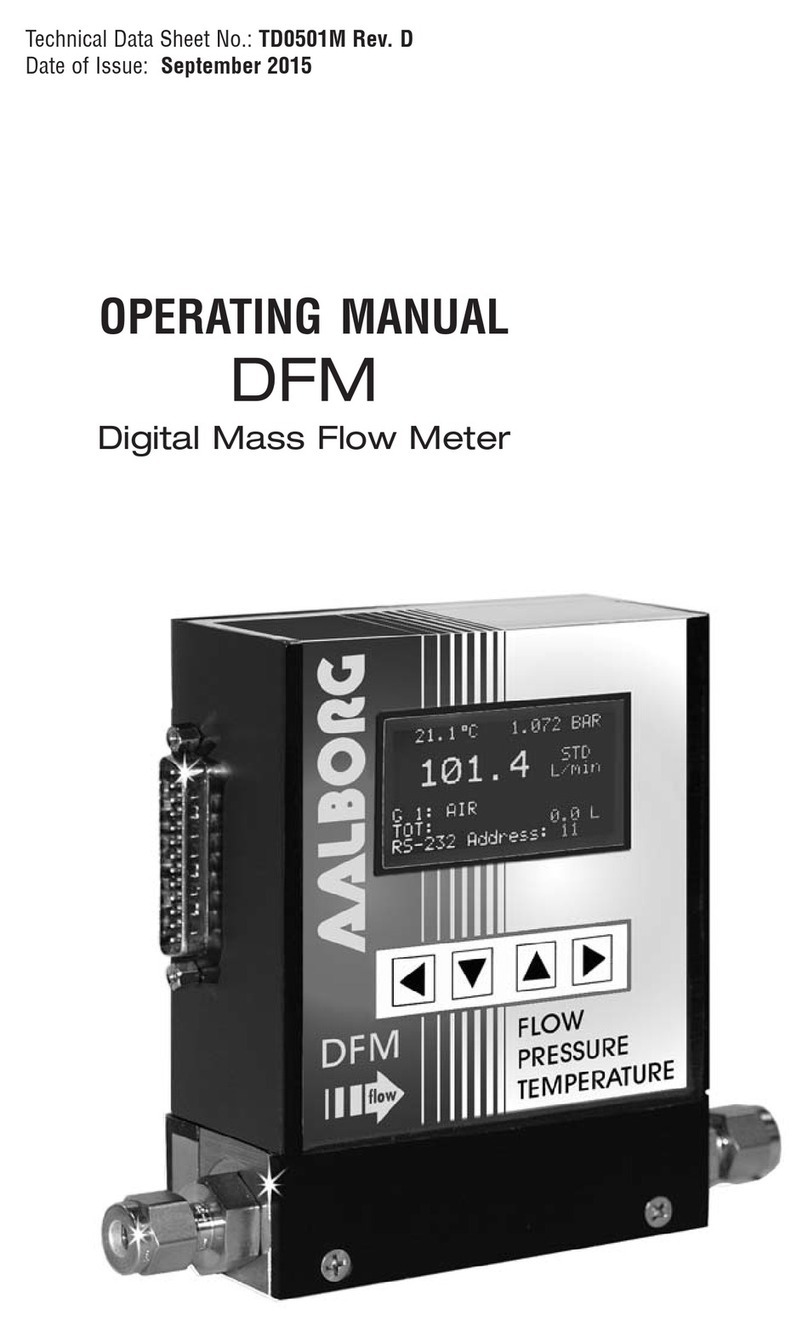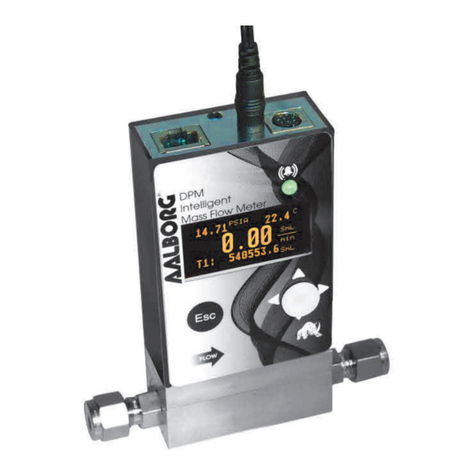TABLE OF CONTENTS
1. UNPACKING THE XFM MASS FLOW METER.........................................
1.1 Inspect Package for External Damage.................................................
1.2 Unpack the Mass Flow Meter...............................................................
1.3 Returning Merchandise for Repair.......................................................
2. INSTALLATION........................................................................................
2.1 Primary Gas Connections.................................................................
2.2 Electrical Connections......................................................................
2.2.1 Power Supply Connections..............................................................
2.2.2 Output Signals Connections..............................................................
2.2.3 Communication Parameters and Connections...................................
3. PRINCIPLE OF OPERATION..................................................................
4. SPECIFICATIONS...................................................................................
4.1 CE Compliance.................................................................................
5. OPERATING INSTRUCTIONS..................................................................
5.1 Preparation and Warm Up..................................................................
5.2 Swamping Condition.......................................................................
5.3 XFM Parameters Settings.................................................................
5.3.1 Engineering Units Settings...............................................................
5.3.2 Gas Table Settings..............................................................................
5.3.3 Totalizer Settings.............................................................................
5.3.4 Flow Alarm Settings......................................................................
5.3.5 Relay Assignment Settings............................................................
5.3.6 K Factors Settings...........................................................................
5.3.7 Zero Calibration...............................................................................
5.3.8 Self Diagnostic Alarm.......................................................................
5.4 Analog output Signals configuration...................................................
6. MAINTENANCE.........................................................................................
6.1 Introduction......................................................................................
6.2 Flow Path Cleaning...........................................................................
6.2.1 Restrictor Flow Element (RFE)........................................................
6.2.2 XFM 17 models................................................................................
6.2.3 XFM 37/47 models..........................................................................
6.2.4 XFM 57/67/77 models.....................................................................
1
1
1
1
1
1
3
3
3
4
6
7
8
11
11
12
13
13
14
14
15
16
17
17
19
19
20
20
21
21
21
21
22






























